renatronic
Translator and Localization Specialist Driven by Technology
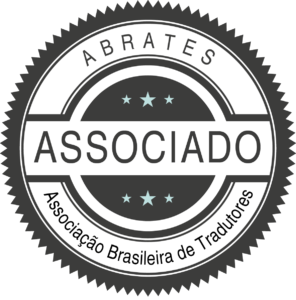
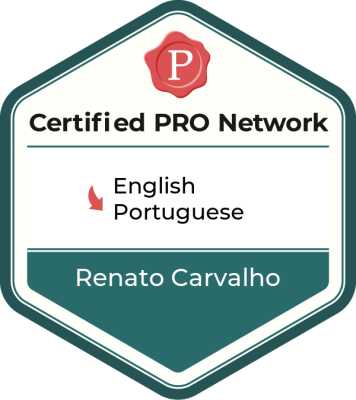
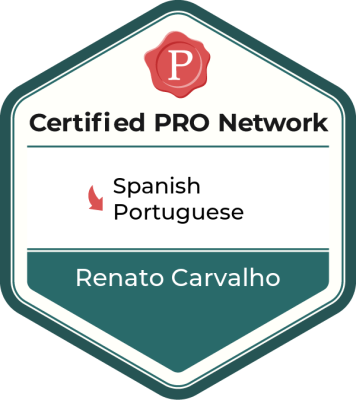
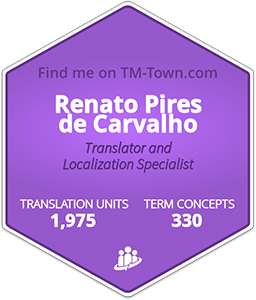
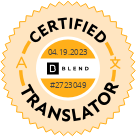
About Me
Greetings! My name is Renato Carvalho, I’m a Brazilian translator based in São Paulo, and my goal is to help people and companies to overcome the language barrier by translating English <> Portuguese, Spanish > Portuguese, and French > Portuguese content in a comprehensive range of fields and topics, especially medical, legal, IT, finance, marketing, and general business.
Please check out my one-minute video presentation:
Background
Over the past 11 years, I’ve worked as a translator and editor, but my background also includes studies and hands-on experience in photography, graphic design, and IT. I firmly believe that these experiences helped me to become a more versatile professional and a better translator, since a translation, by its very nature, tends to multidisciplinarity.
Here is my resume waiting for your eyes:
Services
Click on the items below for more details about each service:
Work Method
One of my favorite ways to proceed to achieve translation industry standards, as well as personal requirements of quality, is by applying corpus linguistics, before starting the translation process, to create bilingual glossaries with the most recurrent and reliable terms. Nevertheless, in times of information overload, it is also crucial to remain committed to lifelong learning and focused on the basics: the final product is nothing but a piece of text that brings all the properties intrinsic to the languages involved, such as grammar, style, accuracy, consistency, cohesion, and coherence.
Portfolio
You can download some translation samples that I’m making available here, especially to help you evaluate my work. These texts were chosen based on how challenging or interesting I consider them and – for confidentiality reasons – all of them are in the public domain, published under Creative Commons, or directly authorized by the client.
Translation
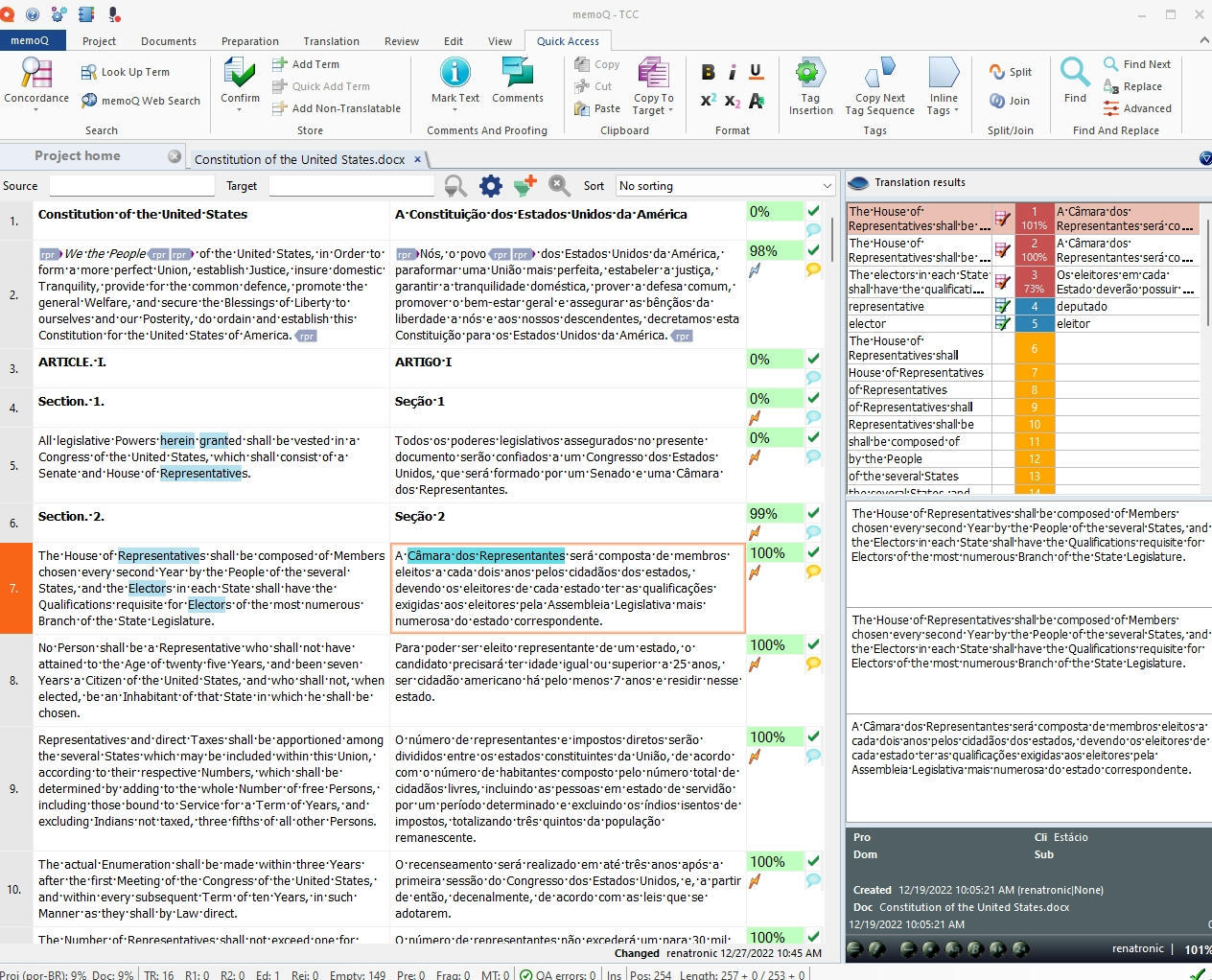
Translation of legal text in memoQ CAT tool displaying the segmented text divided into the source text on the left and the target text on the right
Translation is the conversion of written text from one language to another while keeping the meaning across different cultures, contexts, and media. Many times, one of the most significant challenges of this process is to find a balance between faithfulness and creativity.A faithful translation remains loyal to the source text and ensures that no meaning is lost, however, it may result in a literal or rigid target text. A creative translation, on the other hand, preserves the essence of the author’s original text but adapts it appropriately to the target language through creative and innovative phrasing. That last type is needed, for example, when the same concept does not have an appropriate equivalent in each language due to idiomatic, cultural, and contextual reasons. With that in mind, the goal of a translator is to make translations as faithful as possible to the source text and to be creative when necessary.
Localization
Localization is the adaptation of a product's full content for a new culture in order to make it feel like it had been created especially for a specific target market.It encompasses translation and addresses cultural and non-textual components as well as linguistic issues when making a product or service suitable for another language and the place where it is spoken, also known as a locale. Those components may be imperial vs. metric measurements, currency units, paper size, date formats, colors, graphics, text length, and shortcut keys, among many others.
Editing
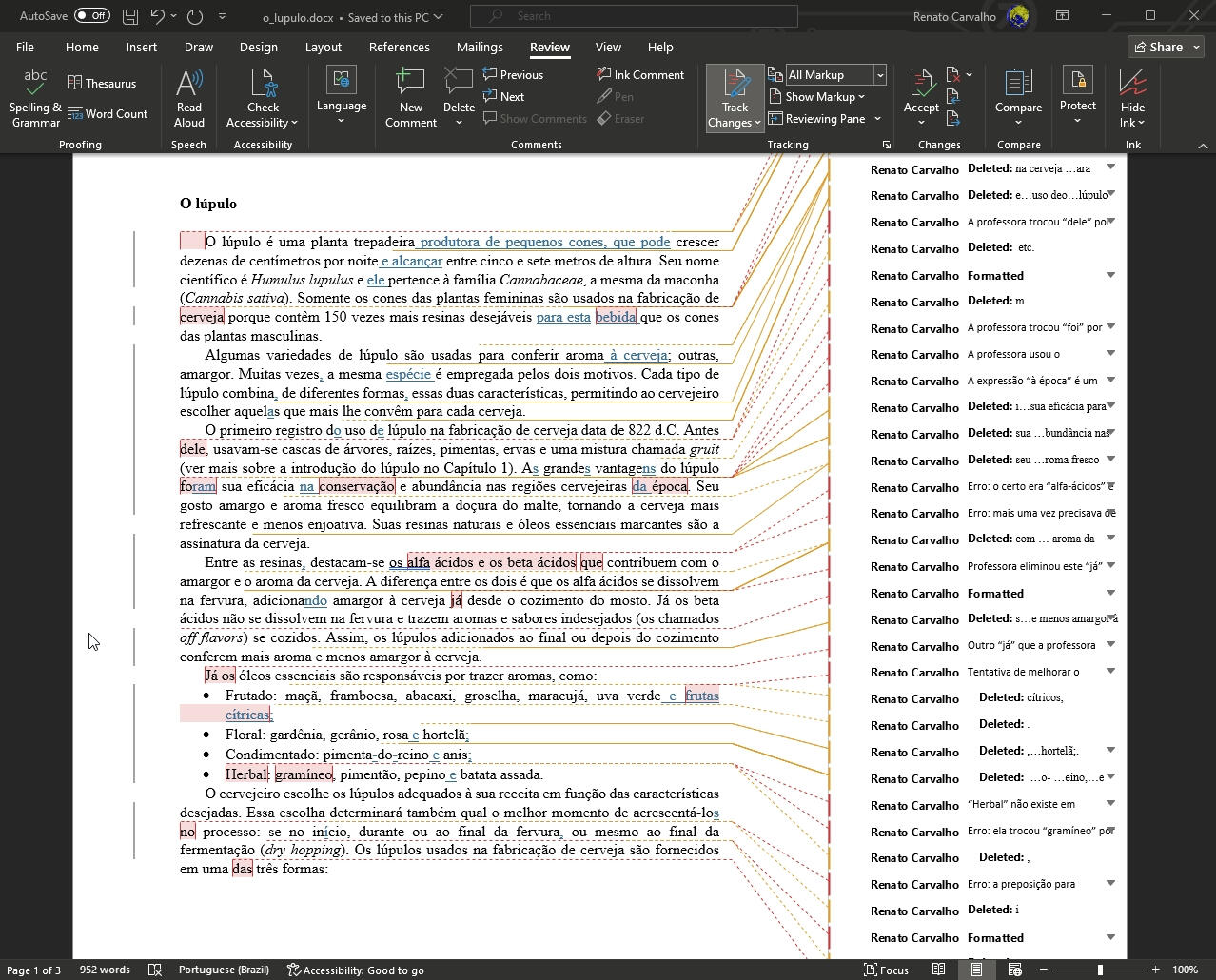
Screenshot of a technical text being edited in Microsoft Word with several changes and suggestions made in the original content
Editing (also known as copy editing or copy desk) focuses on the meaning of your content by improving the structure, flow, and logic of a text. It is a meticulous comparison between the source and the target text, and it may involve substantial changes in the content to ensure the following textual aspects:
Accuracy: the target text reflects the source text due to the absence of mistranslations, additions, omissions, and untranslated parts;
Style: the appropriate use of diction and tone to adequately influence the reader’s impression of the information itself. It also covers register – the level of formality in a piece of writing –, the adherence to the style guide (if any), and the correction of unidiomatic or literal translations;
Terminology: consistent translation of the same term throughout the text, use of the expected term for a particular client or field, or application of the specified solutions in the project glossary for technical terms;
Syntax and fluency: the use of common expressions and the form or content of a text based on the order of elements and the naturalness of the sentence;
Cohesion and coherence: the use of connectives and the approach of important textual issues to enhance the clarity, such as parallelism, ambiguity, and cacophony;
Design: issues related to text length discrepancies, page numbering, formatting, and markup/tags (codes used to represent the text structure or formatting);
Grammar and typos: spelling, punctuation, capitalization, and non-allowed characters.
Proofreading
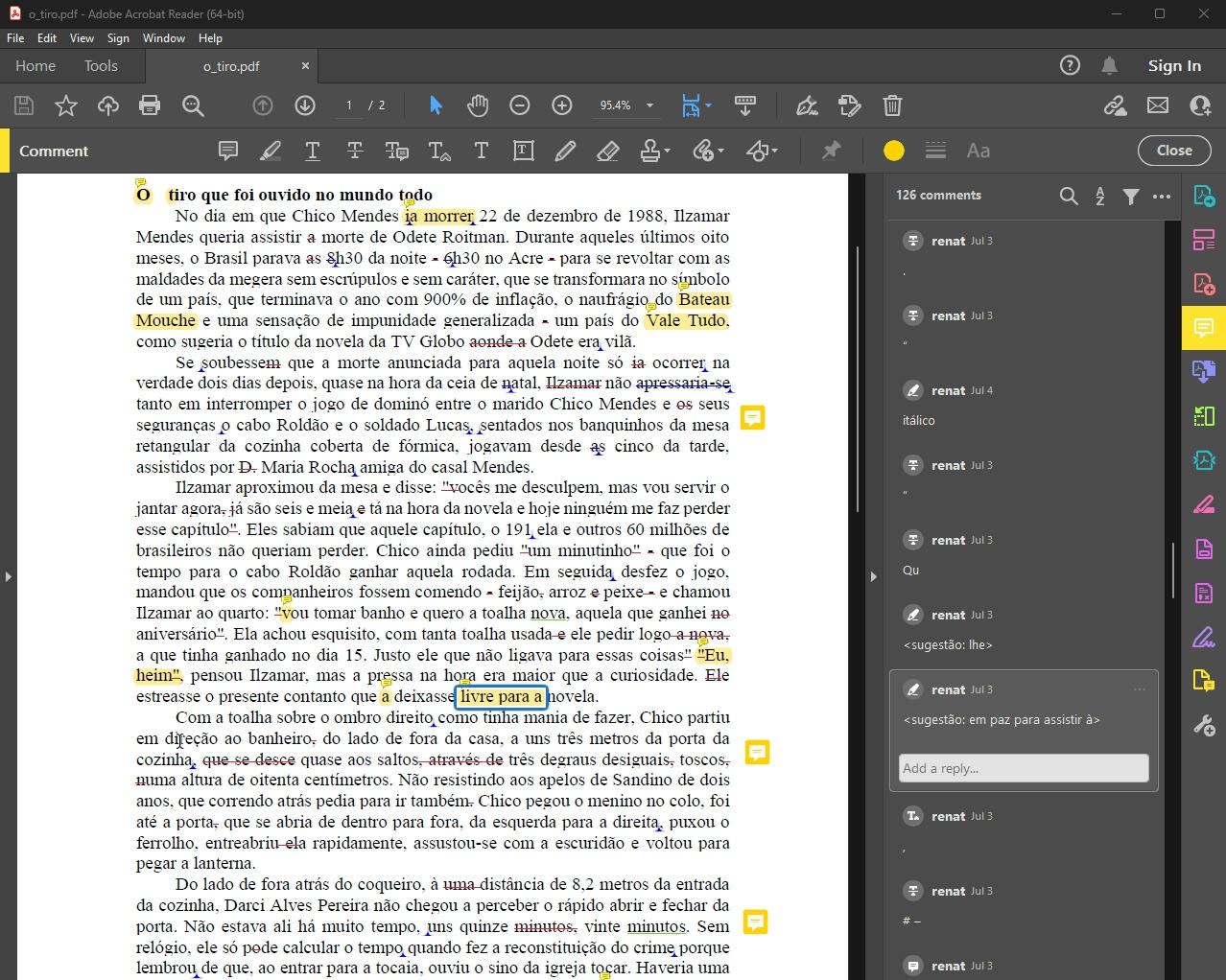
Example of a text originally written in Portuguese being proofread in Adobe Acrobat Reader
Proofreading is a lighter check than editing which aims to fix errors in a “proof” or in a target text. It normally involves:
Design: text length matching, maximum and minimum number of characters, page numbering, formatting, and markup/tags (codes used to represent the text structure or formatting);
Grammar and typos: spelling, punctuation, capitalization, and non-allowed characters.
The role of proofreading is usually encompassed by editing and the main difference between both is that proofreading does not take the source text into account (in the case of a translation) and focuses only on errors, with no obligation to make the text easier to understand. Due to this existing grey area, the most important is that the editor/proofreader and the client are on the same page about the scope of the task which will vary depending on factors like the media in which the text will be published and the contractor (e.g., translation agency or publishing house).
Subtitling
Subtitling is the conversion of speech into text, so it can be displayed at the bottom of a screen in films, television programs, video games, or other visual media. This process is performed in special software for creating and syncing subtitles and may have several uses like allowing the hearing impaired or the people who don’t speak the language on the video to understand it. Time-coding the text so it appears at the right moment, keeping the “linguistic wholes” when breaking lines, and respecting limitations regarding the number of characters are some of the tasks and requirements of this work.
MTPE
Machine Translation Post-editing (MTPE) is the reviewing performed by professional human editors on machine-translated content to ensure high-quality work. It can be divided into two types:
Light post-editing: designed to weed out errors in the translation and make it understandable. Similarly to proofreading, it covers design and grammar issues, but stylistic and terminological consistency is not guaranteed. Thus, it’s ideal for cases like internal communications;
Full post-editing: an in-depth review that incorporates the tasks covered by light post-editing plus any necessary structural and stylistic amendments, so the final text reads naturally in the target language and preserves the tone of the source text. The result is high-quality text with a human touch and is recommended for cases like when content will be presented to clients.
renatronic
Tradutor e especialista em localização movido à tecnologia
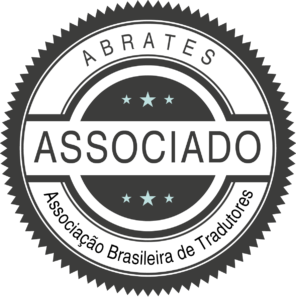
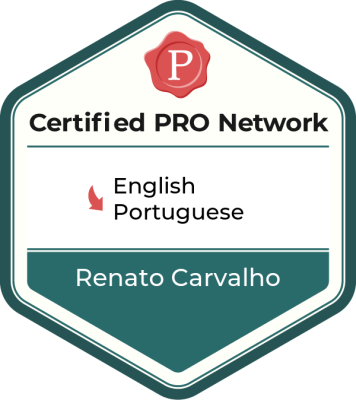
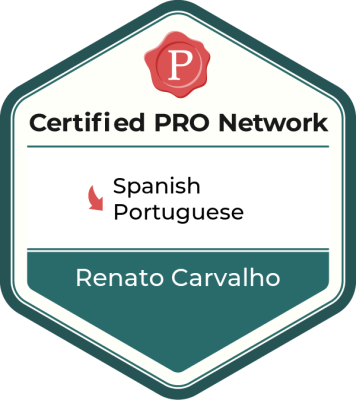
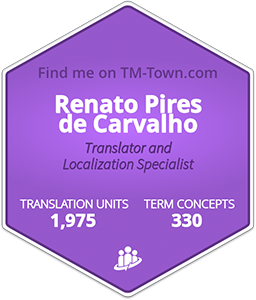
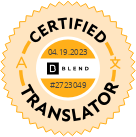
Sobre mim
Saudações! Meu nome é Renato Carvalho, sou tradutor de português brasileiro residente em São Paulo, e meu objetivo é ajudar pessoas e empresas a superarem a barreira do idioma, traduzindo nos seguintes pares de idiomas: inglês > português, português > inglês, espanhol > português e francês > português. Minhas principais especialidades são traduções e serviços relacionados para as áreas médica, jurídica, de TI, finanças, marketing e negócios em geral.
Veja a seguir minha apresentação neste vídeo de um minuto:
Experiência
Nos últimos 11 anos, trabalhei como tradutor e revisor, mas minha trajetória também inclui estudos e experiências em fotografia, design gráfico e TI. Acredito que essas experiências me ajudaram a ser um profissional mais versátil e um tradutor melhor, já que a tradução, por sua própria natureza, tende à multidisciplinaridade.
Segue meu currículo para mais detalhes:
Serviços
Clique nos itens abaixo para mais detalhes sobre cada serviço:
Método de trabalho
Uma das minhas formas favoritas de atingir os padrões da indústria de tradução, bem como requisitos pessoais de qualidade, é a aplicação de linguística de corpus antes do início do processo de tradução para criar glossários bilíngues com os termos mais recorrentes e confiáveis. No entanto, em tempos de sobrecarga de informação, também é crucial manter o compromisso com a aprendizagem contínua e não perder de vista conceitos básicos: o produto final não deixa de ser um texto com todas as propriedades intrínsecas aos idiomas envolvidos, como gramática, estilo, precisão, consistência, coesão e coerência.
Portfólio
Você pode baixar algumas amostras de tradução que disponibilizo a seguir, especialmente para ajudá-lo a avaliar meu trabalho. Esses textos foram escolhidos com base em quão desafiadores ou interessantes os considero e, por razões de confidencialidade, todos estão em domínio público, foram publicados sob Creative Commons ou autorizados diretamente pelo cliente.
Tradução
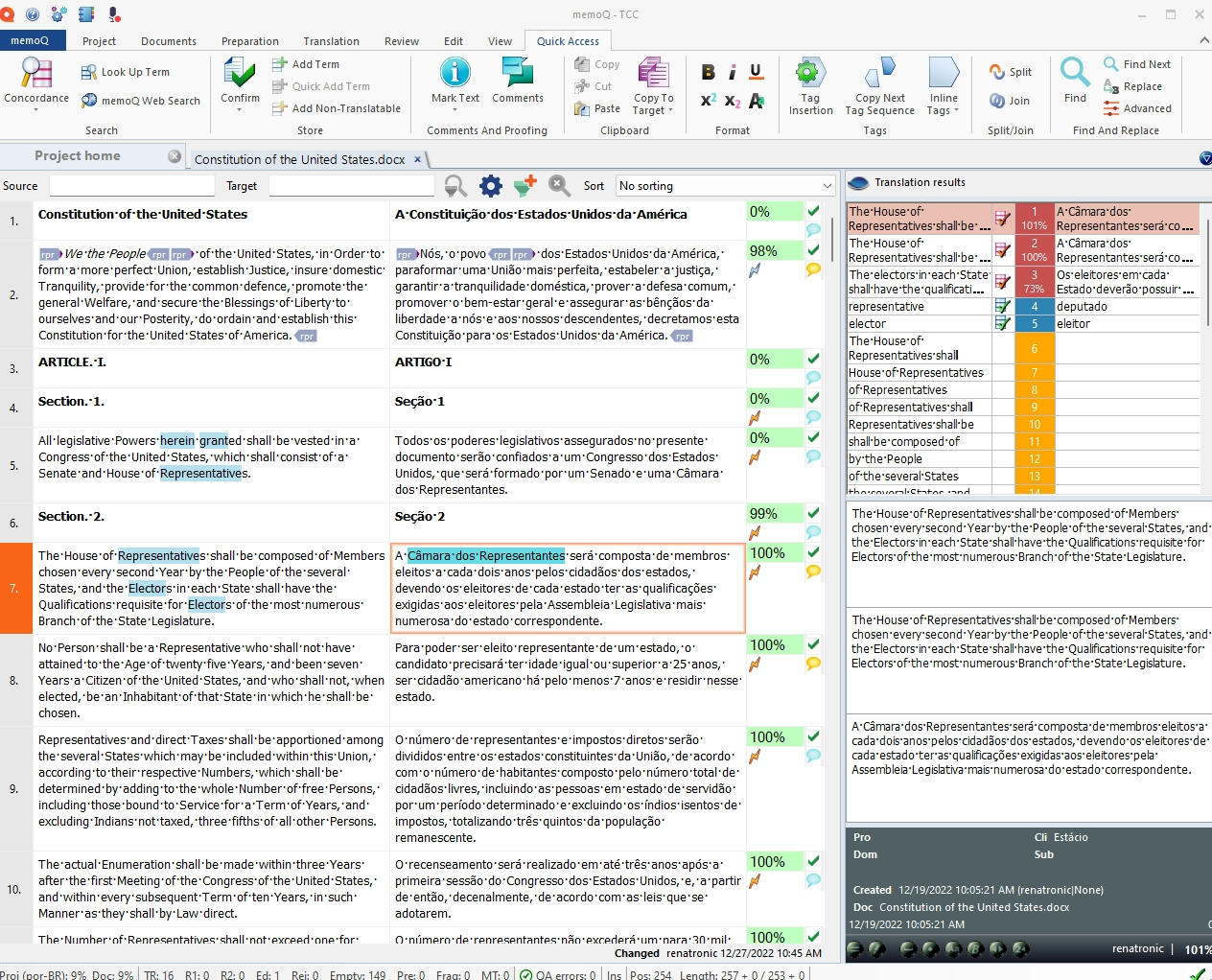
Tradução de texto jurídico na ferramenta CAT memoQ, exibindo o texto segmentado dividido em texto-fonte à esquerda e texto-alvo à direita
Traduzir é converter texto escrito de um idioma para outro, mantendo o significado através de diferentes culturas, contextos e mídias. Um dos maiores desafios desse processo é encontrar um equilíbrio entre fidelidade e criatividade.Quando uma tradução permanece fiel ao texto de origem, nenhum significado é perdido; no entanto, essa abordagem pode resultar em um texto de destino literal ou “duro”. Uma tradução criativa, por outro lado, preserva a essência do texto original do autor, mas o adapta adequadamente ao idioma-alvo por meio de reformulações engenhosas. Esse último tipo é necessário, por exemplo, quando o mesmo conceito não tem um equivalente apropriado em cada idioma devido a razões idiomáticas, culturais e contextuais. Com isso em mente, o objetivo de um tradutor é tornar as traduções o mais fiéis possível ao texto de origem e ser criativo quando necessário.
Localização
Localização é a adaptação de todo o conteúdo de um produto para uma nova cultura com o intuito de fazê-lo parecer que foi criado especialmente para um mercado-alvo específico.Ela envolve a tradução e aborda componentes culturais e não textuais, bem como questões linguísticas ao tornar um produto ou serviço adequado para outro “locale”, ou seja, para uma nova combinação de idioma e local. Esses componentes podem incluir medidas imperiais vs. métricas, unidades de moeda, tamanhos de papel, formatos de data, cores, gráficos, comprimento do texto, teclas de atalho, entre muitos outros.
Preparação
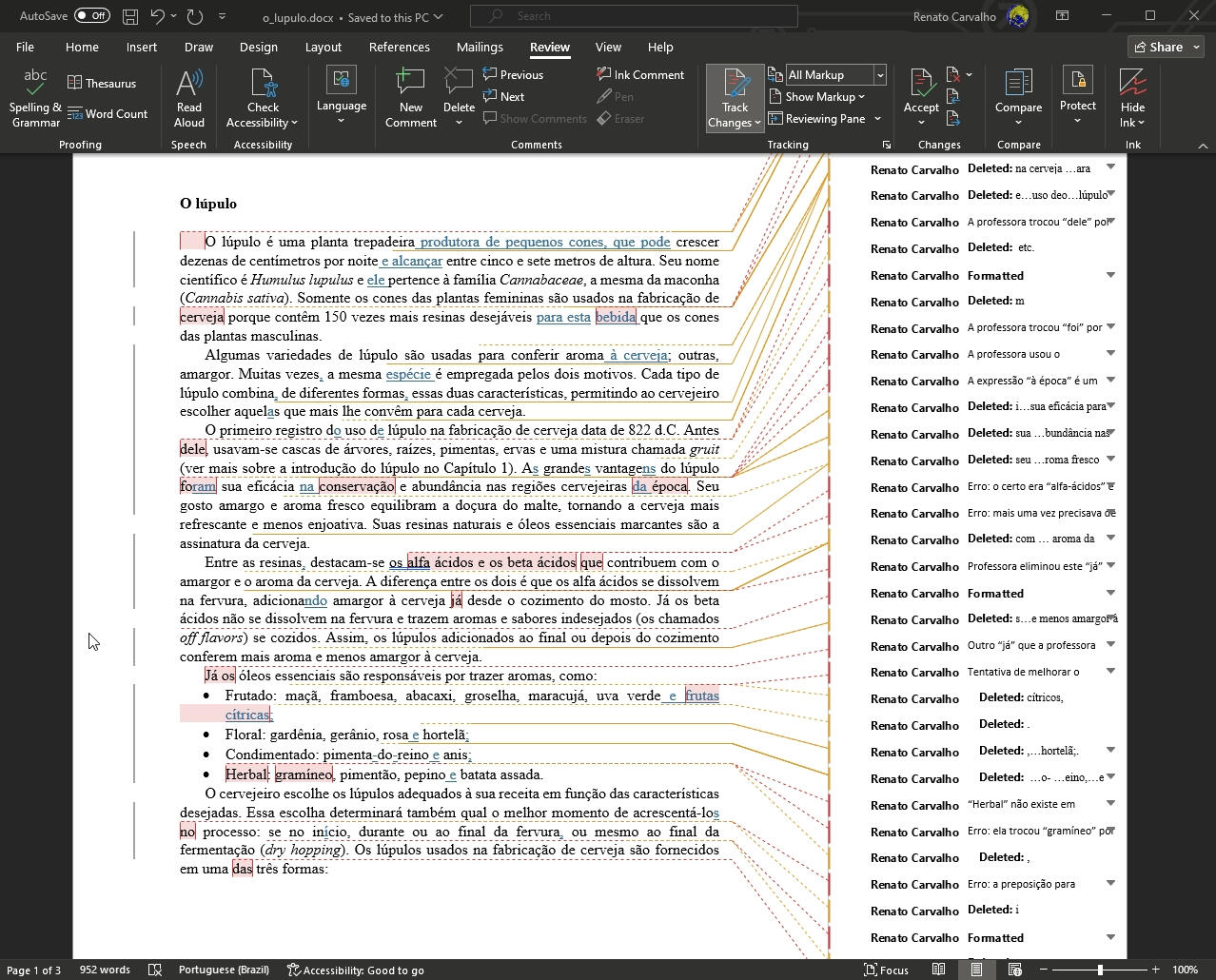
Captura de tela de um texto técnico sendo preparado no Microsoft Word, com diversas alterações e sugestões feitas
A preparação (também conhecida como edição de texto entre os criativos ou copidesque no mercado editorial de jornais e revistas) concentra-se no significado do conteúdo, melhorando a estrutura, o fluxo e a lógica de um texto. É uma comparação meticulosa entre o texto de partida e o texto de chegada, e pode envolver alterações substanciais no conteúdo para assegurar os seguintes aspectos textuais:
Precisão: representação fiel do texto-alvo mediante a retificação de erros de tradução, adições, omissões e trechos não traduzidos;
Estilo: emprego adequado da dicção e do tom de maneira a influenciar corretamente a impressão do leitor sobre as informações em si. Também abrange registro – o nível de formalidade em um texto –, a conformidade ao guia de estilo (se houver) e a correção de traduções não idiomáticas ou literais;
Terminologia: tradução consistente do mesmo termo ao longo do texto, uso do termo esperado para um determinado o cliente ou área, ou ainda a garantia da aplicação das soluções especificadas no glossário do projeto para termos técnicos;
Sintaxe e fluidez: uso de expressões comuns e procedimentos para tornar o conteúdo textual mais verdadeiro com base na ordem natural dos elementos da frase;
Coesão e coerência: emprego de conectivos e abordagem de questões textuais importantes para aumentar a clareza, como paralelismo, ambiguidade e cacofonia;
Design: questões relacionadas a discrepâncias no comprimento do texto, numeração de páginas (no caso de preparação editorial), formatação e marcação/tags (códigos usados para representar a estrutura ou formatação do texto em arquivos e mídias digitais);
Gramática e erros de digitação: ortografia, pontuação, maiúsculas e caracteres não permitidos.
Revisão

Exemplo de um texto originalmente escrito em português sendo revisado no Adobe Acrobat Reader
A revisão é uma verificação mais leve do que a preparação e procura corrigir erros em uma “prova” ou em um texto-alvo. Normalmente, ela engloba:
Design: correspondência entre os comprimentos dos textos, número máximo e mínimo de caracteres, numeração de páginas, formatação e marcação/tags (códigos usados para representar a estrutura ou formatação do texto);
Gramática e erros de digitação: ortografia, pontuação, maiúsculas e caracteres não permitidos.
As tarefas da revisão são geralmente incorporadas pela edição, e a principal diferença entre ambas é que a revisão não leva em conta o texto de origem (no caso de uma tradução) e se concentra apenas em erros, sem a obrigação de tornar o texto mais fácil de entender. Devido à existência dessa área cinzenta, o mais importante é que o preparador/revisor e o cliente estejam alinhados sobre o escopo do trabalho, que variará dependendo de fatores como o meio em que o texto será publicado e o contratante (por exemplo, agência de tradução ou editora).
Legendagem
Legendagem é a conversão da fala em texto para ser exibida na parte inferior de uma tela em filmes, programas de televisão, videogames ou outras mídias visuais. Esse processo é realizado em software especial para criar e sincronizar legendas e pode ter várias finalidades, como permitir que deficientes auditivos ou pessoas que não falam o idioma no vídeo o compreendam. Marcar o tempo do texto para que ele apareça no momento certo, preservar as “unidades linguísticas” ao quebrar linhas e respeitar as limitações quanto ao número de caracteres são algumas das tarefas desse trabalho.
MTPE
A pós-edição de tradução automática (MTPE) é a revisão realizada por editores humanos profissionais em conteúdo traduzido por máquina para garantir um trabalho de alta qualidade. Pode ser dividida em dois tipos:
Pós-edição leve: serve para eliminar erros na tradução e torná-la compreensível. Semelhante à revisão, abrange problemas de design e gramática, mas a consistência estilística e terminológica não é garantida. É ideal para casos de comunicação interna;
Pós-edição completa: trata-se de uma revisão aprofundada que incorpora as tarefas cobertas pela pós-edição leve, além de quaisquer emendas estruturais e estilísticas necessárias, para que o texto final seja natural no idioma-alvo e preserve o tom do texto de origem. O resultado é um texto de alta qualidade com um toque humano e é recomendado para casos em que o conteúdo é apresentado ao cliente.
Thank You
Magna sed justo. Donec et odio sed felis sagittis imperdiet. Orci varius natoque penatibus et magnis dis parturient montes etiam.





